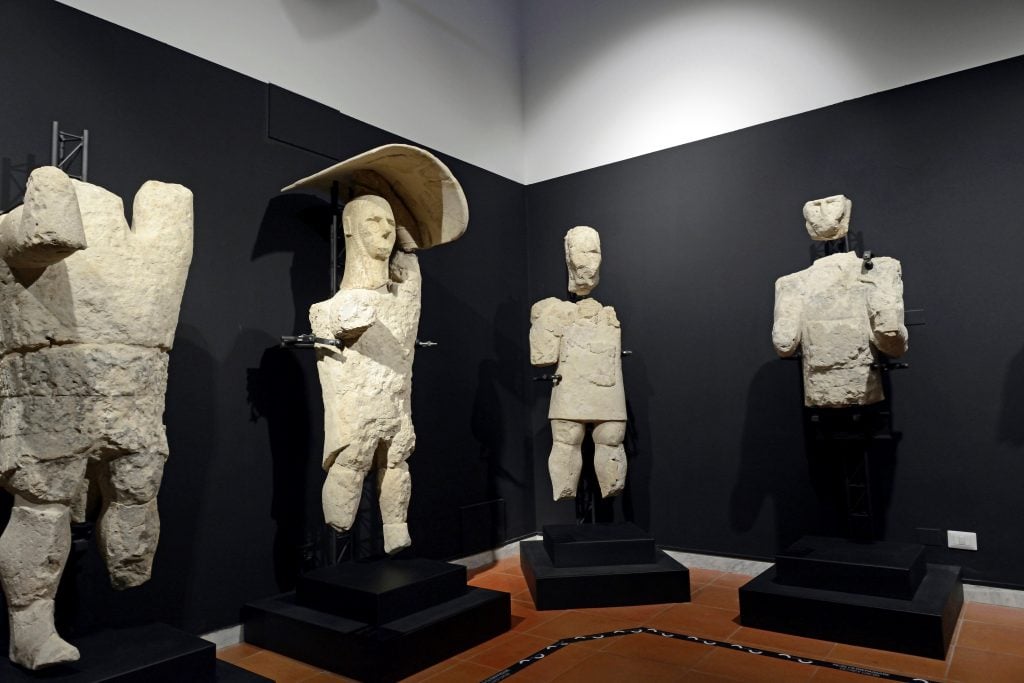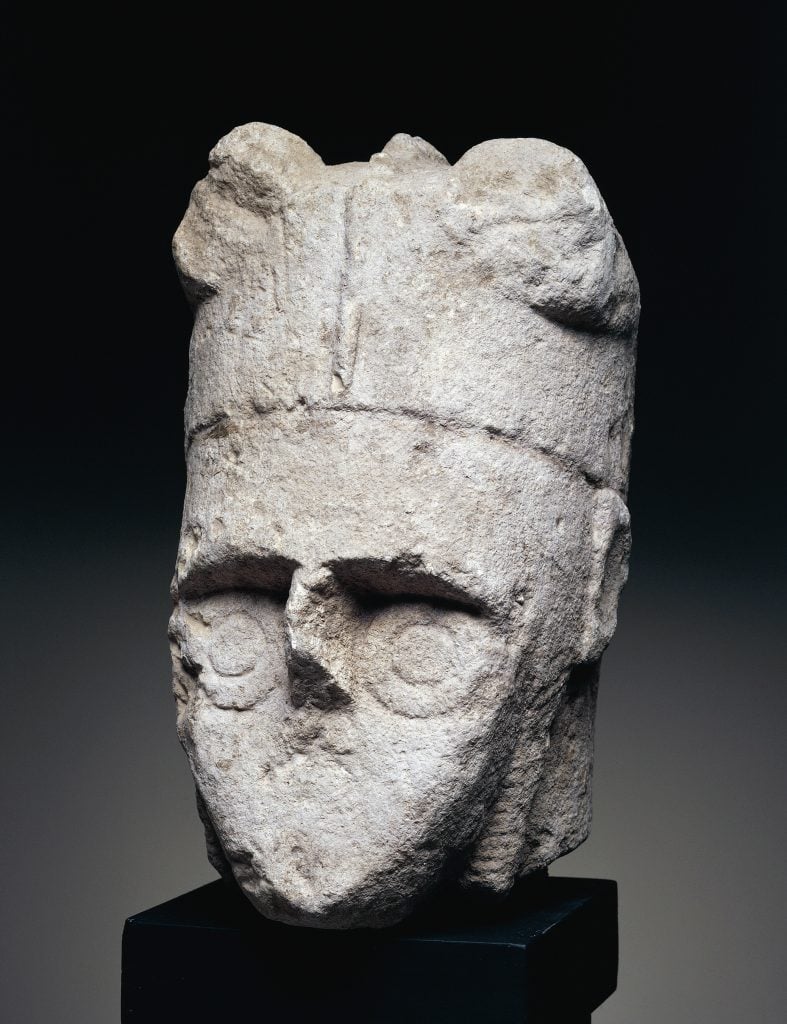Archaeology & History
Archaeologists in Sardinia Have Unearthed Two Giant Fragments of Millennia-Old Statues of Boxers
But researchers are unsure about the function of the mysterious sculptures, or why they were destroyed.

But researchers are unsure about the function of the mysterious sculptures, or why they were destroyed.

Dorian Batycka

Researchers digging in an ancient necropolis on the Italian island of Sardinia recently made a truly monumental discovery—a pair of torsos belonging to a group of millennia-old larger-than-life sculptures known as the “giants of Mont’e Prama.”
The first batch of the stone figures, with eerily expressionless faces, deep-set eyes and angular features, were dug up by Sardinian farmers in 1974. Even more remarkable than their appearance is their height, with the sculptures standing at more than seven feet tall.
Initially thought to have been made by the Carthaginians, who conquered parts of the island around 500 B.C.E., researchers now believe they belong to the Nuragic people, who inhabited the island between 1800 and 700 B.C.E. That civilization built the more than 7,000 distinctive beehive-shaped megalithic structure known as Nuraghi that dot the island, according to the National Geographic.
Found buried near graves containing the bodies of mostly young men, the sculptures are believed to represent boxers, archers and warriors, but archaeologists are unsure about their function. Some believe they may have been ancestral custodians designed to overlook the necropolis, while others suggest they may be meant to signify the lives of specific individuals buried on the island.

A head of a warrior from Mont’e Prama, Cabras, Sardinia, attributed to the Nuragic Civilization. Now housed in the Museo Civico Speleo-Archeologico in Nuoro. Photo: DeAgostini/Getty Images.
Part of the mystery surrounding these figures is their fragmented state, which researchers suggest means they were likely purposely torn down. But what led to their destruction?
Sixteen figures have been discovered so far, and some are now housed in the Civic Museum in Cabras.
The newest finds, believed to be boxers based on the shields carved around their bodies, will be need to be carefully removed by archaeologists before they can be fully studied. “The two large and heavy blocks of torsos will need time to be freed from the sediment around them so they can be prepared as is necessary for their safe recovery,” said Monica Stochino, the Superintendent of Archaeology for the city of Cagliari, Sardinia’s capital, in a statement.
“It’s an exceptional discovery,” said Italy’s culture minister, Dario Franceschini, in a statement. “Two new jewels are added to this statue group with its mysterious fascination, capable of attracting the attention of the whole world.”